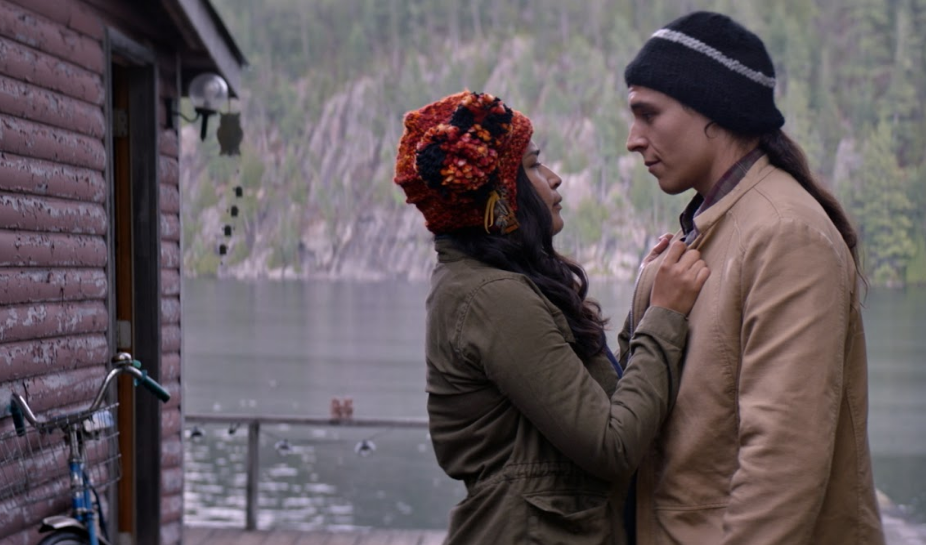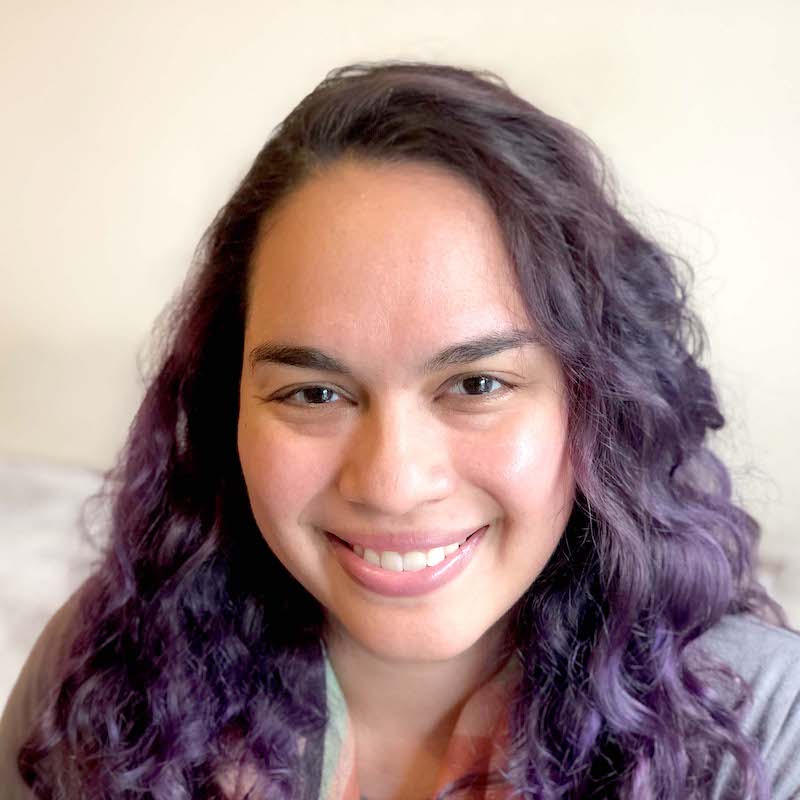
- Details
- By Monica Whitepigeon
Learning to balance between following dreams and meeting family expectations is a challenge for many young people, especially Native/Indigenous women. These stories are all too familiar and emerging female directors, writers and actresses are determined to make these perspectives known and explored.
Recently released from Indican Pictures, The Incredible 25th Year of Mitzi Bearclaw is a quirky, coming-of-age film that splices together heartbreaking moments against fantastical dream scenarios as the protagonist copes with the reality of her ailing family members and what it means for her future. Written and directed by Mohawk filmmaker Shelley Niro (Kissed by Lightning), who weaves together comedy and drama in this surrealist perspective on modern Indigeneity.
“Film is such an exciting and interesting medium to be working in and to me, you can do everything. You can combine all the art forms into film. I have so many films left in me to do so I really want to push it and get as much work done as I can,” Niro remarked on being an older director.
After learning about the high suicide rates in young people on her reserve, Niro decided to give back through her version of storytelling to keep younger generations inspired. In 2019, the National Indian Council on Aging reported that Native youth suicide rate is 2.5 times higher than the overall national average and is second leading cause of death.
“As an artist, I question myself, what can I do about that? I’m not a social worker, I can’t do anything. The only thing I can do is try to make something and someone watches it and can become happy… It comes down to being isolated, alienated and living in a society that doesn’t necessarily open up doors for you and you really have to punch your way through and make a presence for yourself,” Niro claimed.
Mitzi Bearclaw, portrayed by Chippewa queer actress Morningstar Angeline (Drunktown’s Finest), has dreams of making it in the fashion industry and changing the world with her custom designed hats. Based in Toronto, the hatmaker soon finds herself called back to her isolated reserve in southwest Canada. There, Mitzi is reacquainted with childhood friends and bullies, her docile father and invalid mother, played by Billy Merasty (Cree descent) and Gail Maurice (Saskatchewan Métis). With the help of her best friend Charlie B and crush Honeyboy, portrayed by Andrew Martin (Mohawk Nation) and Ajuawak Kapashesit (White Earth Ojibwe descendant and Cree), Mitzi learns to overcome her insecurities and strained relationship with her bitter, unsupportive mother.

Throughout the feature, Mitzi retreats to a surreal world where family members and other characters adapt opposite personalities and appear in sci-fi or other fantastical circumstances. The reserve/rez sense of humor is amplified in these scenes with overly abundant Native symbols, imagery and music, which payoff in delightful reflections and growth for the protagonist.
Niro explained her approach to the script, “When I wrote the script, I tried to keep it more like a national story, I didn’t want to concentrate on one tribe or nation or one way of doing things. I really wanted it to be like any Native person could watch this and really relate to it. I also wanted it to be humorous in spots, so it’s not so full of dread and dreariness.”
Despite its themes related to death and trauma, the film never loses its sense of wonder and the interconnectedness of Mitzi’s family and reserve community. Each character attempts to make sense of the world in their own unique way while still playing into their archetypes.
Niro placed an immense amount of trust into the cast and encouraged them to put themselves and their stories into the film’s characters.
“I loved it. It was such a small set, you really got to know everybody. I had a great time working with a lot of new faces and some people I’ve met on different projects. (We) got to hang out on the rez and go onto an overloaded pontoon boat that almost crashed multiple times,” Kapashesit joked while he reflected on working with some of the same cast and crew from Indian Horse, where he played the lead role.
“I really had fun in how different Mitzi was from me. We shared common experiences, but how she handled them, and she was a little more clumsy than I was and that worked to her benefit. She moved to the city but still had this naivety about her to some degree, and she was seeing how much she could push those limits,” Angeline said.

As an Indigenous hat-maker, Mitzi’s creativity incorporates more natural materials that don’t always align with practicality or comfortability with her designs. Over the course of a year, her persistence and engagement with her reserve community help her gain new perspectives and approaches to her creations.
“When it came to playing a young, Indigenous woman who is also promiscuous, who is making mistakes and who is living in accordance to how she wants. She has a lot of agency and that is what I brought to the character. I’m a very independent person and it was nice to embody that in a character when normally the characters I’m put up for are much more reserved or within a (specific) time period.”
The story behind the scenes highlights what good working relationships can create and inspire. Much like Mitzi, Angeline challenged herself with this role and holds onto her dream of becoming even more involved in filmmaking.
“We’re (Indigenous people) seen through the trauma lens. This is the first project that I did that had that real tone to it. I’m really grateful for this film, because it opened my eyes to my capabilities as an Indigenous actor and also a comedic Indigenous actor.”
This deceptively in-depth and insightful film showcases the inner struggle Indigenous youth experience when trying to realize their independence. Niro’s Indigenous futurist approach to creating this sci-fi/fantastical world for Mitzi gives a refreshing glimpse into the possibilities of Native storytelling.
Angeline commented, “By default, we are futurists because we are Indigenous peoples living in this ‘future/present’ time.”
Available now for purchase and on digital platforms, such as Apple TV, DirecTV, Google Play, Prime Video, FandangoNOW.
More Stories Like This
Chickasaw Artists Represent at Southwestern Association for Indian Arts in Santa FeZuni Partners Share Community-Led Delapna:we Project at ATALM 2025 Conference
Celebrating 50 Years: The Rockwell Museum Looks to the Future with "Native Now"
AMC Announces Return of Dark Winds for Season 4, Premiering February 15
Film featuring Teyton Colbert to hit theaters in November
Help us tell the stories that could save Native languages and food traditions
At a critical moment for Indian Country, Native News Online is embarking on our most ambitious reporting project yet: "Cultivating Culture," a three-year investigation into two forces shaping Native community survival—food sovereignty and language revitalization.
The devastating impact of COVID-19 accelerated the loss of Native elders and with them, irreplaceable cultural knowledge. Yet across tribal communities, innovative leaders are fighting back, reclaiming traditional food systems and breathing new life into Native languages. These aren't just cultural preservation efforts—they're powerful pathways to community health, healing, and resilience.
Our dedicated reporting team will spend three years documenting these stories through on-the-ground reporting in 18 tribal communities, producing over 200 in-depth stories, 18 podcast episodes, and multimedia content that amplifies Indigenous voices. We'll show policymakers, funders, and allies how cultural restoration directly impacts physical and mental wellness while celebrating successful models of sovereignty and self-determination.
This isn't corporate media parachuting into Indian Country for a quick story. This is sustained, relationship-based journalism by Native reporters who understand these communities. It's "Warrior Journalism"—fearless reporting that serves the 5.5 million readers who depend on us for news that mainstream media often ignores.
We need your help right now. While we've secured partial funding, we're still $450,000 short of our three-year budget. Our immediate goal is $25,000 this month to keep this critical work moving forward—funding reporter salaries, travel to remote communities, photography, and the deep reporting these stories deserve.
Every dollar directly supports Indigenous journalists telling Indigenous stories. Whether it's $5 or $50, your contribution ensures these vital narratives of resilience, innovation, and hope don't disappear into silence.
 The stakes couldn't be higher. Native languages are being lost at an alarming rate. Food insecurity plagues many tribal communities. But solutions are emerging, and these stories need to be told.
The stakes couldn't be higher. Native languages are being lost at an alarming rate. Food insecurity plagues many tribal communities. But solutions are emerging, and these stories need to be told.
Support independent Native journalism. Fund the stories that matter.
Levi Rickert (Potawatomi), Editor & Publisher

